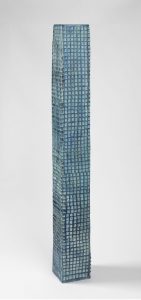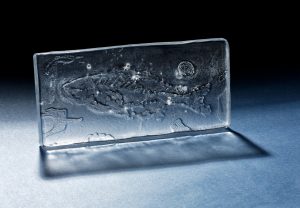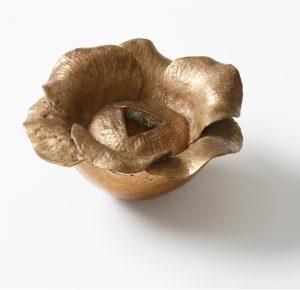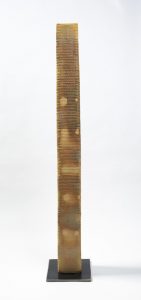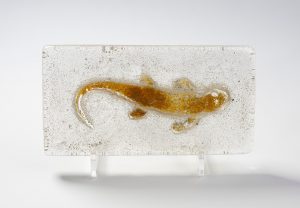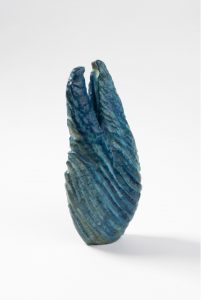ELSBETH PLUIMERS
荷兰 NETHERLANDS

Exhibition
EUROVISIONS:
A KALEIDOSCOPE OF EUROPEAN ART IN CHINA
欧洲视野
中国的欧洲艺术万花筒
May 24, 2024 to June 24, 2024
Archive Art Museum / Beijing, China
2024 年 5 月 24 日至 2024 年 6 月 24 日
档案艺术博物馆 / 中国北京
Organizer
Pashmin Art Consortia
who is she!
Renowned Dutch sculptor Elsbeth Pluimers boldly addresses the intricate nuances of the Anthropocene epoch through her art. Coined by Nobel Laureate Paul Crutzen in 2000, the Anthropocene signifies a geological era dominated by human influence on Earth’s environment and ecosystems. Born on May 1, 1954, Pluimers leverages her unique background in biology and geology to channel the epoch’s pressing themes into her work, embodying the roles of both artist and scientist.
Pluimers’ art confronts humanity with a pivotal choice—succumb to despair at the potential demise of life or rise to the challenge of restoring harmony between nature and mankind. Opting for the latter, she draws upon her scientific expertise and Asian cultural influences to craft a distinct visual lexicon conveying her message. Under the title ‘Golden Spike’, Pluimers’ work explores the intricate relationship between humans and nature in this new epoch. Referencing a geological term denoting a specific point in Earth’s timescale, the title resonates with her thematic focus on human-induced change, emphasizing the imperative to reconcile humanity and nature in the Anthropocene era.
Pluimers’ fascination with the genesis and evolution of Earth breathes vitality into her sculptures, cast in bronze, as well as her glass and ceramic creations. Influenced by eminent scientists such as Lynn Margulis, Peter Westbroek, Neil Shubin, and Dirk Sijmons, Pluimers imbues her artwork with their discoveries and theories. This scientific grounding lends authenticity and contemporary relevance to her work, particularly within ongoing dialogues surrounding the environment and human impact.
Elsbeth Pluimers’ art serves as a poignant commentary on the Anthropocene epoch, echoing the urgent imperative to restore equilibrium between humanity and nature. Embodying the dual roles of biologist and geologist, her intricate sculptures encapsulate the tensions and possibilities inherent in this challenging era. Amidst human-induced transformations, Pluimers utilizes her artistic platform to engage, enlighten, and inspire, advocating for the restoration of harmony between humanity and the natural world.
她是谁!
埃尔斯贝特·普卢默斯大胆地通过她的艺术作品探讨了人类新世纪的复杂细微差别。由诺贝尔奖获得者保罗·克鲁岑在2000年创造,人类新世纪意味着地球环境和生态系统被人类影响主导的地质时代。普卢默斯出生于1954年5月1日,她利用自己在生物学和地质学方面独特的背景,将这个时代的紧迫主题融入她的作品中,扮演着艺术家和科学家的双重角色。
普卢默斯的艺术作品向人类提出了一个关键选择——陷入对生命潜在灭绝的绝望,还是迎接恢复自然与人类之间和谐的挑战。她选择了后者,利用自己的科学专长和亚洲文化影响力,创造了一种独特的视觉语言来传达她的信息。在“金刺”(Golden Spike)的标题下,普卢默斯的作品探索了人类与自然在这个新时代之间的复杂关系。这个标题引用了地质学术语,指的是地球时间尺度上的一个特定点,与她对人类引发变化的主题关注呼应,强调了在人类新世纪中调和人类与自然的必要性。
普卢默斯对地球的起源和演化的着迷为她的青铜雕塑、玻璃和陶瓷创作注入了活力。受到林恩·马古利斯、彼得·韦斯特布鲁克、尼尔·舒宾和迪克·西蒙斯等著名科学家的影响,普卢默斯将他们的发现和理论融入她的艺术作品中。这种科学基础赋予了她的作品真实性和当代相关性,特别是在围绕环境和人类影响的持续对话中。
埃尔斯贝特·普卢默斯的艺术作品作为对人类新世纪的深刻评论,回响着恢复人类和自然之间平衡的紧迫需求。扮演生物学家和地质学家两重角色,她的雕塑体现了这个充满挑战的时代中固有的紧张和可能性。在人类引发的转变中,普卢默斯利用她的艺术平台来参与、启迪和激励,倡导恢复人类与自然之间和谐的努力。

